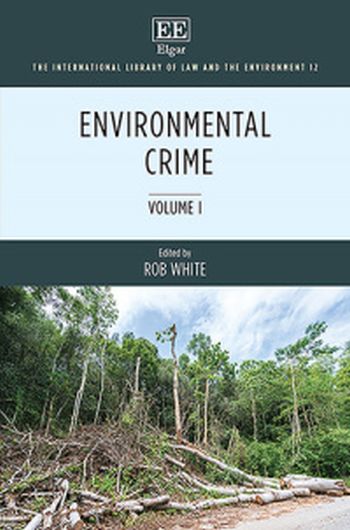
Environmental crime is arguably the most vital and destructive crime of the 21st century, especially in the light of climate change and shifts in social, economic and ecological circumstances that will accompany global warming. This two volume set explores the nature and dynamics of environmental crime and investigates a variety of topics including illegal fishing, poaching, wildlife crimes, animal abuse, climate change and ecocide as well as crimes related to waste, energy and contamination. Together with an original introduction by the editor, this collection provides researchers and students alike with a comprehensive overview of crimes pertaining to the environment.